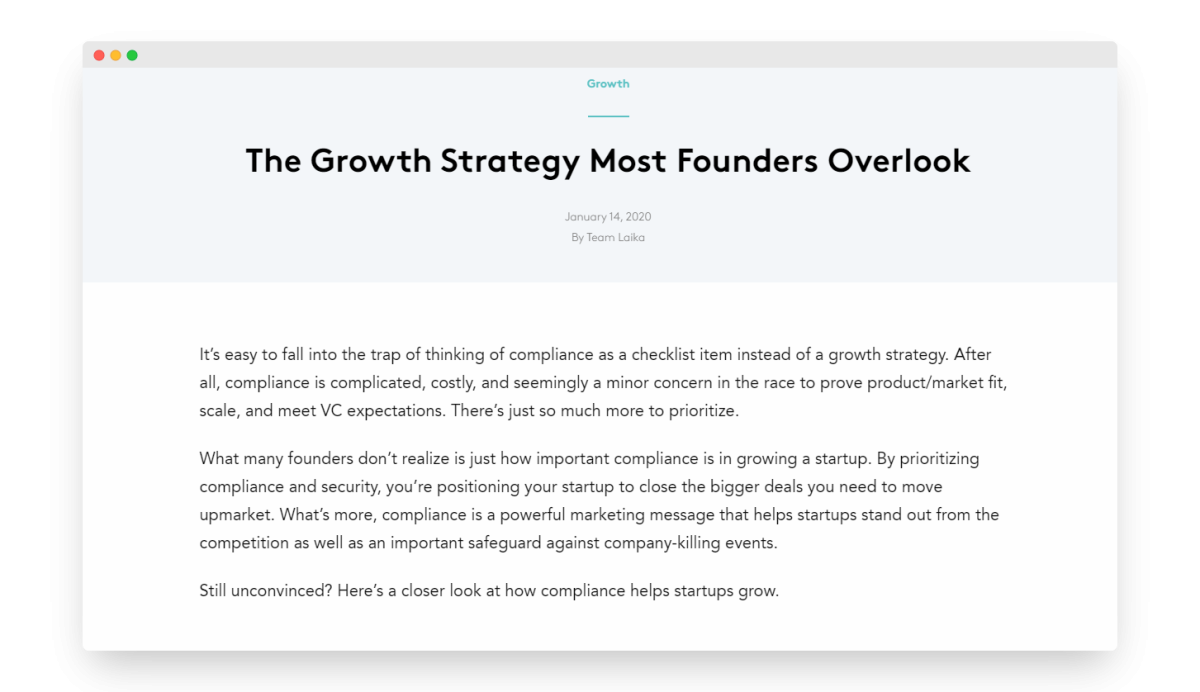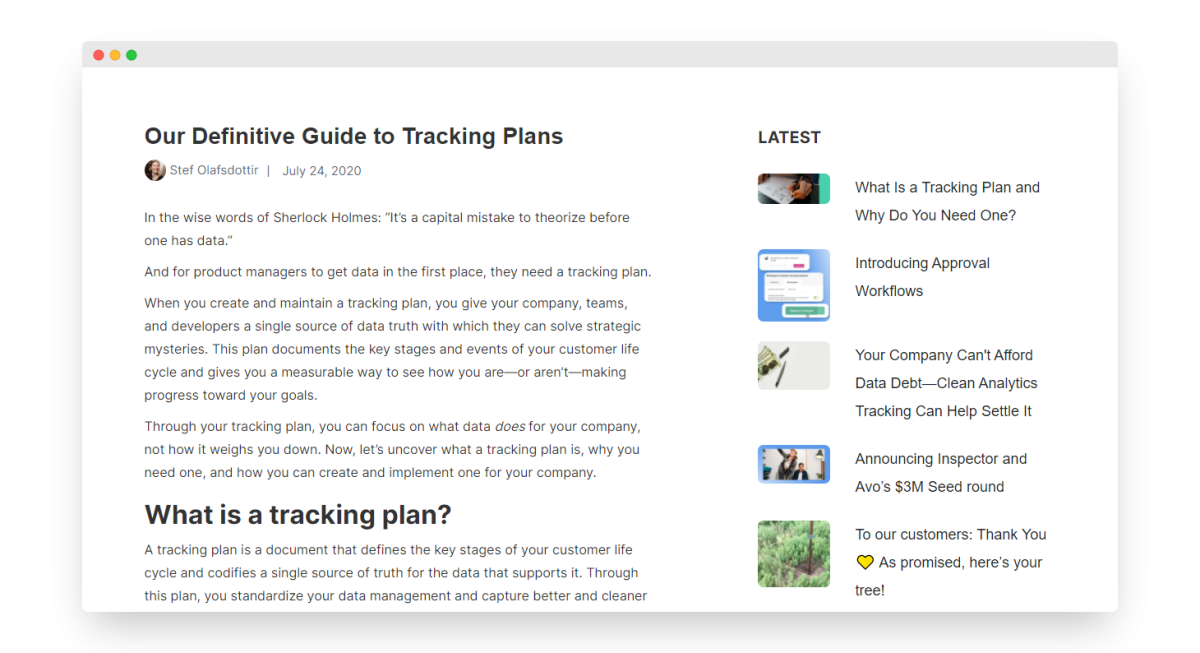It’s a misconception that content marketing takes three months, or six months, or even a year to be valuable. Content marketing can—and should—have a positive impact on your company from day one.It’s true that many of the benefits of content marketing take time to manifest. Traffic doesn’t appear overnight. Keyword rankings take time, especially for a newer website. Solid backlinks can be few and far between, at least in the early days.
But while we all understand the long-term nature of content marketing, not enough is said about the immediate benefit.
From the instant you hit publish on your first post, content marketing is making your company a better communicator. That isn’t just a “nice to have”: that’s something that drives revenue.
It’s allowing you to better articulate your product vision. It’s improving the persuasiveness of your sales and marketing messages. It’s providing real, meaningful value to prospects and creating a relationship of goodwill and reciprocity. There’s no waiting period for these benefits.Traffic is valuable, but what matters even more is your ability to connect with, persuade, and encourage people towards a sale. With a bit of planning, that’s something that content marketing can help with from day one.
The “Dream Article” Idea
Your very first article can and should help close deals and generate revenue. With that objective in mind, here’s a question we ask new customers:
If you could kick off your content marketing with a single, ideal article, what would that article be?
This is an exercise we recommend every content marketer and content team undertake. Briefly put aside talk of long-term strategy and campaigns and identify the one article you’d love to publish above all others. What is the single biggest problem you can solve with content? How can your first blog post have the biggest impact?Usually, identifying a single idea to commit to paper is an easy process. Most teams have a handful of big ideas they’ve always wanted to write or topics their sales or support teams have requested, vocally and repeatedly.
In fact, we see a few common themes emerge from these high-impact first articles. To fast-track the ROI of your first blog post, try following one of these examples:
1. Articulate Your Philosophy
Every company can benefit from documenting their philosophy. Take this example from a compliance startup called Laika: The Growth Strategy Most Founders Overlook. This was the first article published on their blog, and it’s a perfect articulation of the core Laika belief: compliance is a growth channel, not a checklist item.

Contained in this single pithy article is everything sales prospects, new hires, and even investors need to know about Laika’s reason for existence:
It reframes the dull world of compliance as something beneficial, urgent, and completely worth investing in.
It explains how Laika is different from the mom-and-pop consultancies that normally handle compliance projects.
It highlights the team’s deep expertise and experience through real-world examples and anecdotes.
This isn’t a post designed for mountains of traffic or backlinks. Instead, it’s created with faster-acting benefits in mind: to persuade sales prospects and nudge them towards a deal; to help the company solidify their messaging; and to present visitors, employees, and investors alike with the clearest version of Laika’s philosophy. It unlocked those benefits from the first instant of publishing.
2. Solve a Painful Customer Problem
Every sales or support team runs into recurring customer issues: common sources of confusion, handfuls of oft-repeated questions, or just big, painful problems that are downright hard to solve.
Identify the most pressing of these challenges, commit a solution to paper, and you’ve created a resource that can accelerate sales conversations, streamline support requests, and add a huge amount of value to prospects and customers.I love this example from quality management software provider Greenlight Guru. When COVID-19 hit, many of the company’s prospects and customers (all medical device manufacturers) were struggling to meet the demand for vital equipment—like ventilators and PPE—while also following legislation designed to safeguard public health. In response, the team funneled their expertise into a guide to Emergency Use Authorization.

The topic isn’t the biggest driver of traffic, but it does address the single biggest challenge facing the company’s customers and prospects. There’s no need to wait for the article to become useful: it offers an immediate solution to an urgent problem.
3. Flex Your Authority
Your first blog post can be a powerful showcase of expertise. Case in point: few teams spend more energy thinking about data and analytics than Avo. Their Definitive Guide to Tracking Plans is the ultimate highlight reel for that expertise, containing the sum total of the team’s knowledge, experiences, and anecdotes.

Publishing an articulate summary of a key topic proves that you’ve been thinking about the topic for a long time, that you’ve refined your thinking, and that you care enough to document it for posterity. It’s a powerful signal to the world and to your sales prospects: this is our area of expertise. This is the topic you should know us for. We are authorities.As well as building authority, these articles have an immediate impact on the consistency of your company messaging. The positioning, language, and ideas contained within Avo’s guide are easy for the whole team to share, understand, and internalize. It gets your company—your entire company—singing from the same hymn sheet and sharing the same proven messages during every customer interaction.
Don’t Wait to See the Value
We often treat content marketing like a wait-and-see kind of strategy, with a big potential payoff at some time in the future—and we forget the payoff that happens right now.Your very first blog post could—and should—have a demonstrable impact on your business. It can persuade sales prospects by clearly articulating your company philosophy. It can solve some huge, painful problem. It can align your entire company around a crucial sales or marketing message.Identifying and writing that “dream” blog post is an effective way to get value from your time and energy, right from day one—and it’s a great way to get buy-in from any content skeptics on your team.
